Despite the almost child-like simplicity of this popular song written by Ray Henderson, Bye Bye Blackbird has become one of the most important jazz standards of all time. It has everything that improvisers love in a standard: an infectious melody, beautiful chords, an elegant structure and enough space to let you really stretch out and express yourself creatively.
The song begins with a fascinating stretch of wide open space in the 1 chord. The entire first line is like a blank canvas that you can paint any way that you like. It's hard to imagine a more inspiring way to begin a solo than to play with complete freedom over such a minimalist background. Then the second line provides a nice contrast, letting you improvise melodies over a very simple and beautiful chord progression. This progression begins with a provocative diminished chord which we will discuss below, and the line ends in tension with the two-five progression:
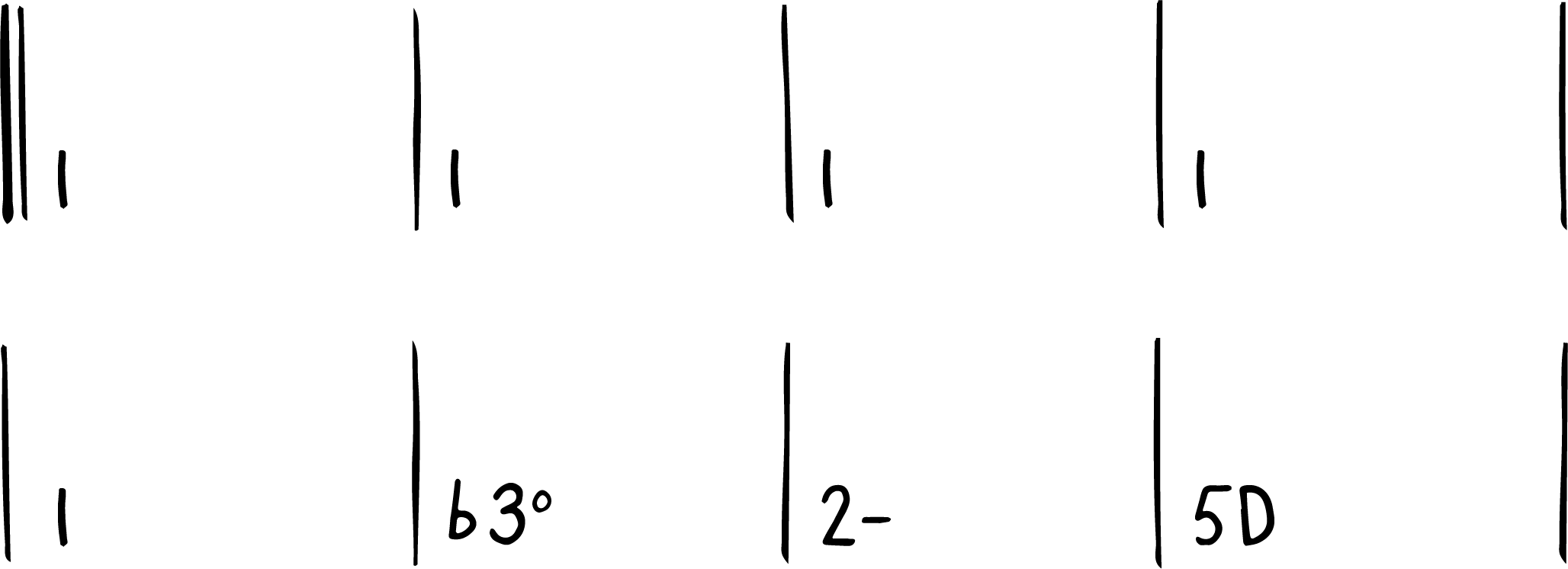
The next set of eight bars raises this same idea up one scale degree to the 2- chord. This section starts with a long stretch in the 2- chord, and again follows the same pattern of alternating one line of stillness with one line of movement. Notice in this case, however, that the chord progression in the second line of this section starts in tension and returns us home to the 1 chord:
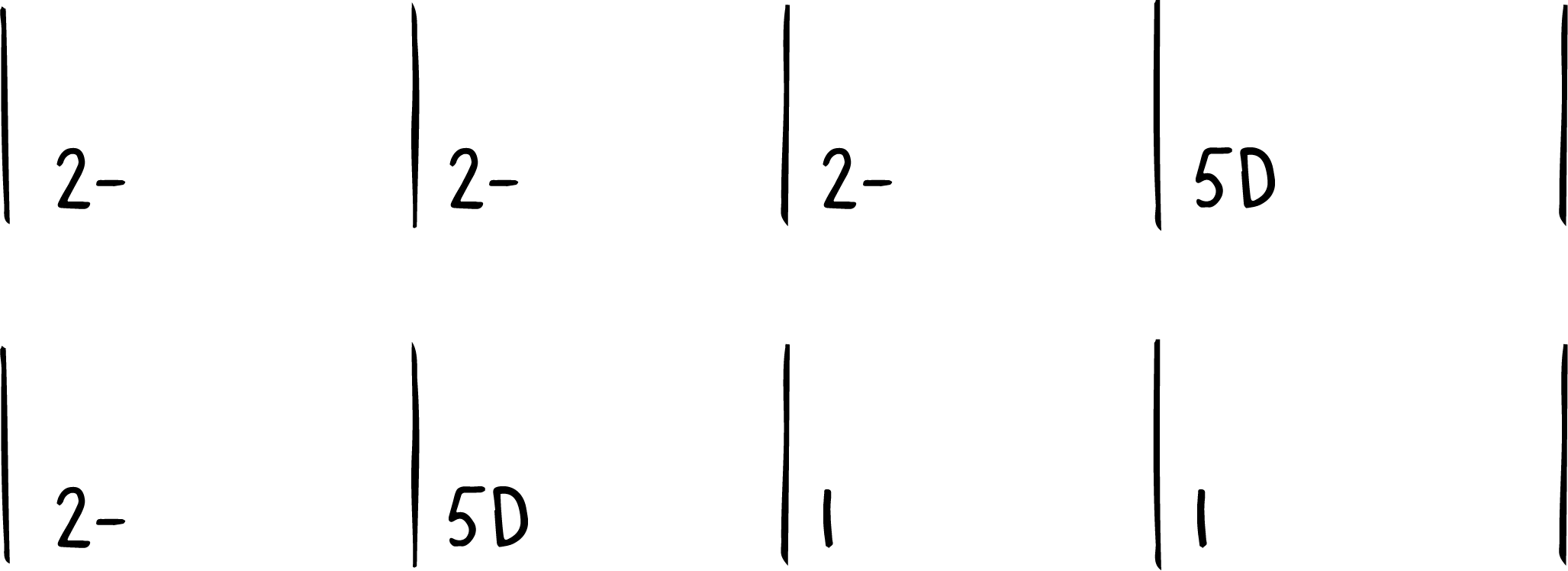
The third set of eight bars feels a bit like a bridge in the style of "I Got Rhythm" and its countless variations:
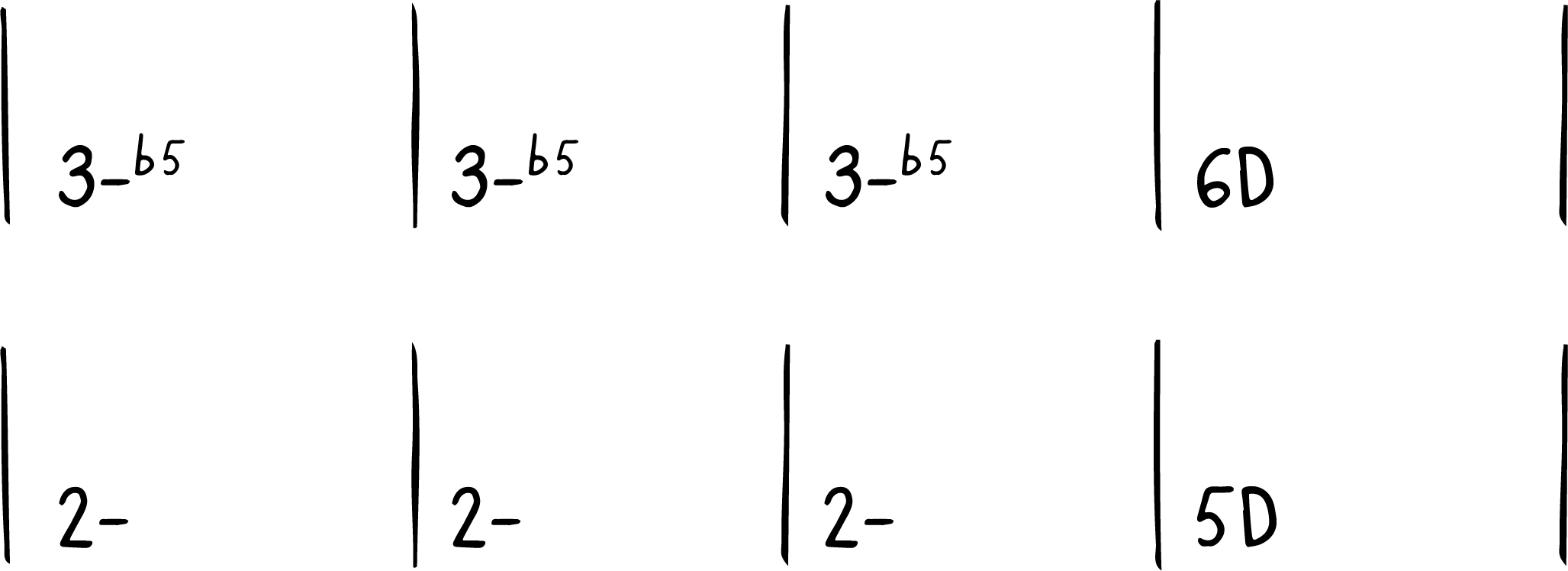
And predictably, the song ends by restating the opening melody in a compressed form that allows the song to end:
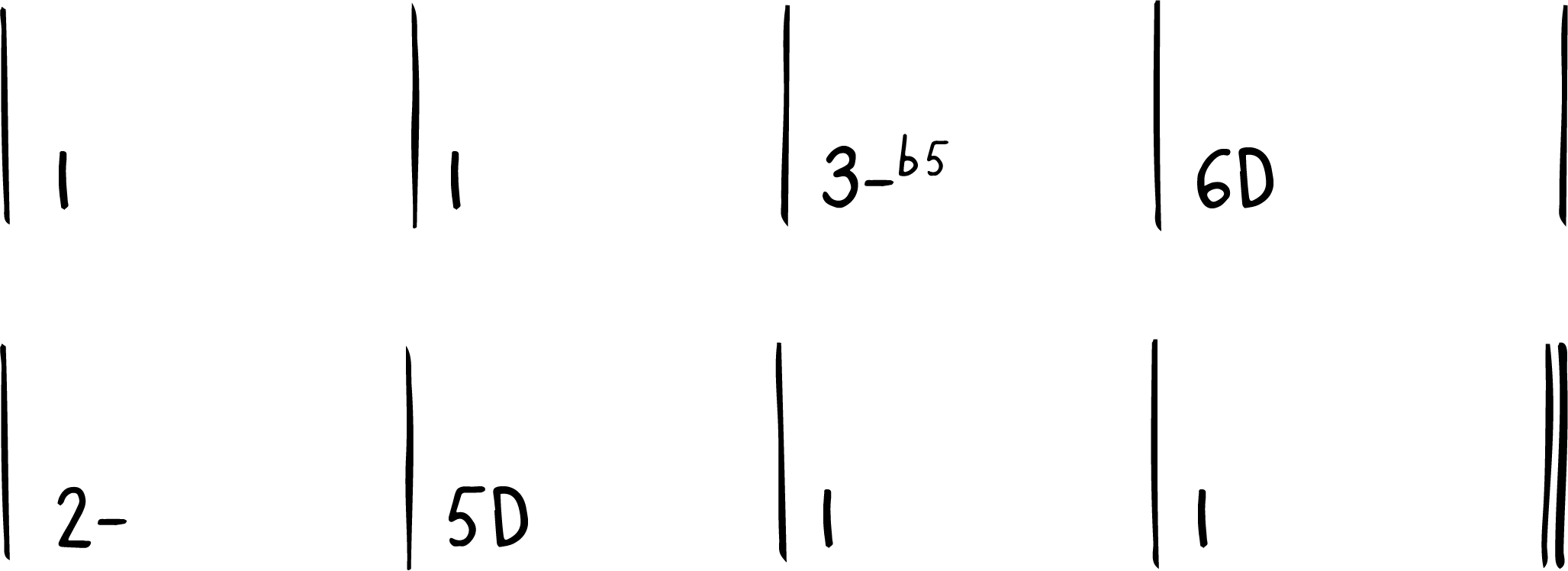
IFR tonal analysis
The path to the 1 chord
The 2-5-1 chord progression plays an important role in Bye Bye Blackbird. Since you already have a lot of experience playing this chord progression in IFR Standards Workout 1, think about how you can take your ability with this progression to the next level. Bye Bye Blackbird is quite simple harmonically, with the chords changing at a nice relaxed pace. So this might be an especially good song to practice playing in keys that are unusual or difficult for you. Another way to challenge yourself is to think about what you personally can bring to the music. "Knowing the changes" is really just a starting point. That's when the real creative journey begins. If the 2-5-1 chord progression is already very familiar to you, take advantage of this familiarity to push yourself to higher levels of creativity and expressiveness in your own melodic inventions.
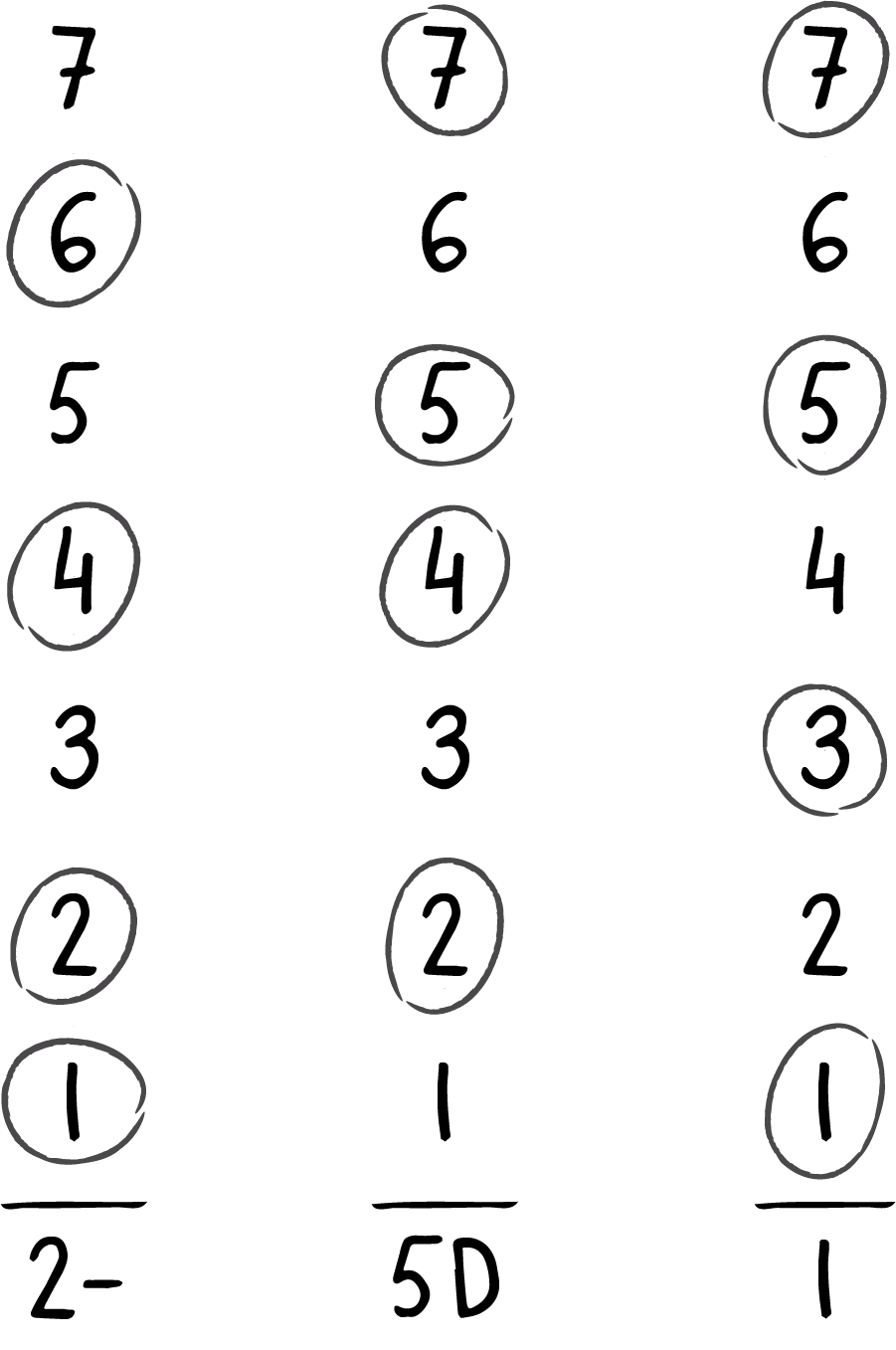
The path to the 2- chord
The path to the 2- chord is another progression that you have already seen before. This one is a bit more complex, using two notes from outside the key of the music, and it's a good one to have under your fingertips. Pay special attention to the scale of the 6D chord which uses both #1 and b7. Did you know that you can use this harmonic device in your music even when it's not present in the written chord changes? You don't have to limit your use of these "magic notes" #1 and b7 to just those times when the written chord is the 6D chord. As an improviser, you can use these notes anytime you want to create a feeling of attraction toward the 2- chord.
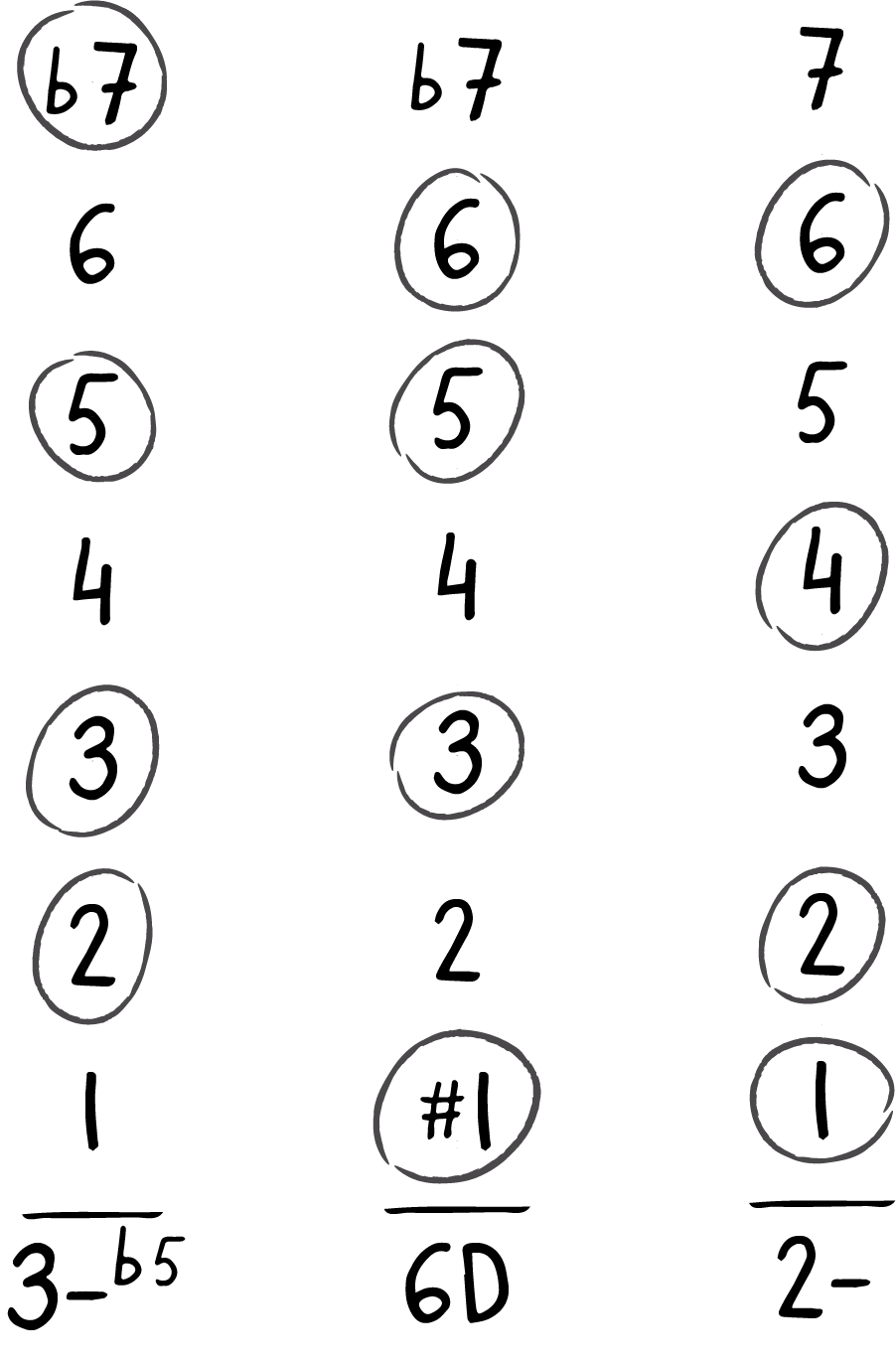
The b3º chord
Probably the most interesting chord in the whole song is the b3 diminished chord that appears in measure 6. Diminished chords always generate lots of interesting discussion because there are multiple ways to imagine the harmonic function of these perfectly symmetric chords.
Many musicians would simply play a diminished scale over this chord. And while you can certainly paint any musical shape you like over any chord, I think it's helpful to first decide which notes you feel are the most consonant in this moment. In other words, what is the complete scale that YOU hear in your mind when this chord sounds? When I go through this exercise, I come up with the notes shown in the accompanying drawing.

As you're exploring the sounds of the b3dim chord, notice how similar these sounds are to the harmonic environment of the 2D chord which we study in IFR Exercise 4. So another way you could express the chord-scale of the b3dim chord would be to simply call it a 2Db9 chord. This is an example of a principle that holds true generally, which is that in jazz standards you can always relate any diminished chord to some other secondary dominant chord. In fact, one of the ways that jazz music evolved over the 20th century was to replace many of the old-fashioned diminished chords (which recall the sound of 19th century romantic music) with much more modern-sounding secondary dominants and two-five progressions (like you hear in be-bop music).
And the final two lines are made from chord progressions that we have already analyzed above.
Improvising over Bye Bye Blackbird
I hope that the tonal maps above give you a clearer understanding of the harmony to this beautiful song. And I hope that this clarity of vision empowers you to improvise your own solos with complete freedom over this chord progression.
If you're new to improvising, then a good first step is just to practice creating the sounds shown above in my tonal map drawings, since these are the most consonant notes in each measure of the tune. By limiting yourself to just the notes shown above and using these notes as your palette of colors for improvising, you can be assured that you will always be in perfect harmony with the rest of the musicians.
If you're already an experienced improviser, then the tonal maps shown above are just a jumping off-point. I hope they help you to see the 'big picture' of the harmony so that you can grasp the entire harmonic flow of the song at a glance. But what you choose to paint over that harmonic backdrop is totally unlimited.
Bye Bye Blackbird is one of five beautiful standards included in IFR Standards Workout 2. For each standard you get a complete IFR tonal analysis, creative insights and practice tips plus professional backing tracks in all 12 keys so you can practice improvising over this beautiful song.

